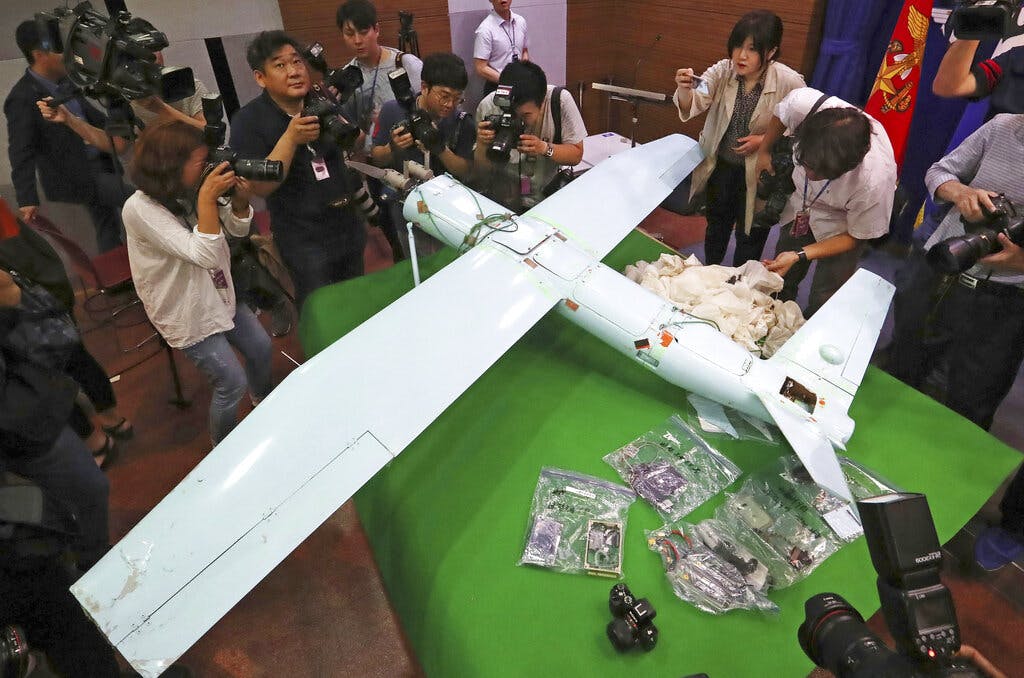North Korean Drones Penetrate Deep Into South Korean Airspace
The South’s Joint Chiefs of Staff scrambled fighter planes and helicopters and shut down Seoul’s two major airports for 45 minutes before assuming the drones had escaped.

The North Koreans have challenged South Korea with an array of drones that penetrated the South’s air defenses Monday, doing no harm but severely embarrassing the South Korean command.
One of the drones, with a wing span of two meters, reached the northern fringes of Seoul, about 30 miles south of the demilitarized zone between the two Koreas, while the others stuck fairly close to the North-South line, hovering above a large South Korean island in the area of the port city of Incheon west of the capital.
The intrusions exposed the failure of South Korea’s armed forces to do much about them. The South’s Joint Chiefs of Staff scrambled fighter planes and helicopters and shut down Seoul’s two major airports for 45 minutes before assuming they had escaped. In a display of futility, helicopters reportedly fired about 100 shots.
Most puzzling about the drone flights was why the North ordered them five years after the last North Korean drone was spotted over the South. That drone, which crashed before getting back to the North, contained cameras discovered to have been photographing the small base 200 miles south of Seoul where the Americans had deployed missiles known as THAAD for “Terminal High Altitude Area Defense.”
This time there was no telling if the North Korean drones had cameras, much less weaponry, since all of them got safely back to the North despite the South deploying a full panoply of gear on the ground and in the air. North Korea also sent a number of drones over the South in 2014, all of which crashed.
The best the South Korean command could say was that one of its planes obtained “visual identification” of a single drone, confirming it was the same type as those seen previously. The plane refrained from shooting it down, said the South Korean command, for fear of inflicting “collateral damage” on the populated area below.
The command, clearly upset by its inability to do anything about the drones, came out with a blustering statement accusing the North of “a clear act of provocation” against “our territorial air.”
The director of operations, Major General Lee Seung-ro, promised South Korean forces would “respond thoroughly and sternly,” but the real question was how the South could ensure defense against drones that might eventually carry weapons capable of devastating South Korean targets. The North sent the drones South after having test-fired more than 90 missiles this year, including two short-range shots Friday.
Unlike missiles, the drones almost certainly would not be able to fire nuclear warheads, even tactical nukes for small targets, which North Korea’s leader, Kim Jong-un, has threatened to use, but the South’s Yonhap news agency expressed concerns “that some North Korean drones could carry chemical and biological weapons for use in potential terrorist operations.”
Yonhap reported the North has an estimated 1,000 drones to “offset the airpower advantage of the South” and also “to bolster its reconnaissance capabilities.” The drones affirm the North’s close relationship with China, which keeps the North on life support with oil and food. They are “based on an imported Chinese D-4 drone system,” said Yonhap, including a version for “both surveillance and attack missions.”

